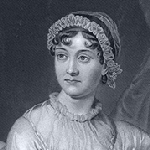
Sign up for our newsletter
The Read & Co. Newsletter will bring you our latest books, blogs, facts and of course news.

Jane Austen is the best-selling author of the timeless romantic classic Pride and Prejudice, among many other wonderful novels.
Jane Austen is one of the most influential and widely read writers in English literature. Best known for her sparkling romantic comedies full of witty social observation, she created unforgettable heroines and quietly radical stories that continue to captivate readers around the world.
Set among the English landed gentry, her novels highlight the limitations placed on women and the necessity of marriage for economic security, all while delivering biting irony and irresistible charm. Though she published anonymously during her lifetime, Austen is now a household name whose influence stretches from academia to pop culture.
Jane Austen was born on 16th December 1775 in Steventon, Hampshire, into a large family on the fringes of the English gentry. She was the seventh of eight children, growing up in a lively, intellectually curious household. Her father, a clergyman, educated her alongside her brothers, and Jane developed a deep love of reading early on. According to biographer Park Honan, the Austen household fostered ‘an open, amused, easy intellectual atmosphere’, one in which debate and imagination flourished.
Austen began writing in her early teens, producing short stories, mock histories, and novellas filled with wit and satire. Among these early works were Love and Friendship (1790), The History of England (1791), and Lesley Castle (1792), all composed to amuse her family and revealing a precocious talent for parody and storytelling.
Between 1793 and 1795, she wrote Lady Susan, an ambitious epistolary novella with an unusually ruthless heroine. Austen’s earliest work often explored the absurdities of romantic fiction and social norms, laying the groundwork for the more refined critiques of her adult novels.
In 1801, Jane’s father retired, and the family moved to Bath, a transition that unsettled Austen deeply. After his death in 1805, the Austen women lived in increasingly strained financial circumstances until they were offered a permanent home in Chawton, Hampshire, by Jane’s brother Edward in 1809.
This quiet cottage life enabled Austen to focus seriously on her writing. Over the next several years, she revised earlier drafts and completed the novels that would make her name.
From 1811 to 1816, Austen published four novels:
All were released anonymously (‘By a Lady’), and while her name remained unknown to the general public, her work was admired in literary circles. Pride and Prejudice, a revision of her early manuscript First Impressions, was an immediate success and remains her most famous book.
Emma, her most structurally sophisticated novel, was published with the support of the Prince Regent’s publisher. Though her earnings were modest, publication gave Austen a sense of professional independence and literary validation.
In early 1816, Austen began experiencing symptoms of a serious illness. Though she tried to continue writing—completing Persuasion and beginning Sanditon—her health declined. Modern scholars suspect Addison’s disease, Hodgkin’s lymphoma, or even bovine tuberculosis as potential causes. She died in Winchester on 18th July 1817 at the age of 41 and was buried in Winchester Cathedral.
Posthumously, her final novels Northanger Abbey and Persuasion were published in 1818, revealing to the world the identity of their anonymous author.
What illness did Jane Austen die of?
Her exact cause of death is still debated, with theories including Addison’s disease, lymphoma, or tuberculosis from unpasteurised milk.
Why did Jane Austen refuse to marry?
Austen received at least one marriage proposal (which she briefly accepted), but ultimately chose to remain single—likely valuing emotional compatibility, intellectual freedom, and independence over social expectation.
Who was Jane Austen’s true love?
Speculation surrounds several men, including Tom Lefroy, a young Irishman she once knew. But Austen’s letters and restraint make her emotional life largely a mystery.
Who did Jane Austen leave her money to?
Most of her modest earnings went to her sister Cassandra and other family members. She left no formal will.
What is Jane Austen’s most popular book?
Pride and Prejudice is the most widely read and adapted of her novels, beloved for its wit, romance, and the iconic pairing of Elizabeth Bennet and Mr. Darcy.
What is considered Jane Austen’s masterpiece?
While Pride and Prejudice holds cultural sway, many scholars consider Emma or Persuasion her finest work in terms of structure, depth, and maturity.
Jane Austen’s works bridged the gap between eighteenth-century sensibility and nineteenth-century realism. Her novels explore the constraints on women, the nuances of love, and the quiet dramas of ordinary life with unmatched clarity and humour.
It wasn’t until A Memoir of Jane Austen, written by her nephew in 1869, that she gained widespread public recognition. Since then, her reputation has grown exponentially. Today, Austen is studied in universities, celebrated in fan communities, and continually adapted for stage and screen.
At Read & Co. Books, we are proud to republish Austen’s novels, juvenilia, and letters. Discover our complete collection of her works, available in hardback, paperback, or ebook format, below.

The Read & Co. Newsletter will bring you our latest books, blogs, facts and of course news.
Copyright © 2020 – present. Read & Co. Books Websites and Content. All rights reserved.